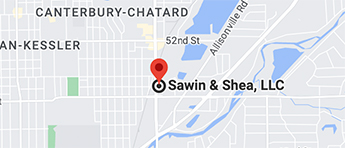Nobody wants to be in a situation where they have to file for bankruptcy, but for the self-employed, it can be a doubly crushing blow. You have worked hard to create your own source of income, but circumstances have made it impossible for you to pay your debts.
You may even have doubts about whether or not self-employed people are eligible to file for bankruptcy. They are. You are. The process is a little more complicated when it comes to gathering documentation for the paperwork, but a bankruptcy attorney can help guide you through the process.
There are two types of bankruptcy you could possibly file for, so step one is finding out which is the right one for you. Before filing for either Chapter 7 or Chapter 13, you will need to take a means test. This will first check to see if your household income is below Indiana’s median income.
The following table provides the most recent median family income data in Indiana (for cases filed after April 1, 2021) reproduced in a format designed for ease of use in completing Bankruptcy Forms 122A-1 and 122C-1.
| 1 earner | 2 people | 3 people | 4 people | |
| INDIANA | $52,327 | $66,386 | $78,113 | $91,772 |
If your income is below this amount, you are eligible to file for Chapter 7. If not, you may still be able to file for Chapter 7, but you will need a lot more documentation, which an experienced bankruptcy attorney can help you with. For example, if you can document the fact that your allowable expenses (like food and rent) leave you with disposable income that is insufficient to pay your debts, you may still be able to file Chapter 7.
Chapter 7
- Your debts will be wiped out, and you will only owe on secured assets for which you sign a Reaffirmation Agreement or non-dischargeable debts like some taxes, student loans, and child or spousal support
- As soon as you file, you will be protected against collection agencies and wage garnishment
- Wages that you earn after the filing are yours (if you become entitled to inherit money within 180 days of filing, this becomes part of the estate, and you don’t get to keep it).
- There is no minimum amount of debt required
- Most cases are over and completely discharged in 3-4 months.
- If you want to keep an asset (like a car or home) and it is not covered by Indiana bankruptcy exemptions, do not file Chapter 7 – look to a Chapter 13.
Chapter 13
- Debts are reorganized in a payment plan that forces creditors to take what the Chapter 13 law says your have to pay them. You receive a discharge on any balances left of most kinds of debts at the end of your plan.
- If you can afford the payment plan agreed on, you can keep assets that may be at risk in a Chapter 7
- Chapter 13 is good at helping people keep things like houses or cars, even when they are behind on payments
- Plan terms run 3-5 years.
For both of these types of bankruptcy, you will need to gather some paperwork. This is where it is more complicated to be self-employed because you won’t have pay stubs or a W-2 to prove your income. However, it is not impossible! There are other ways to prove your income to the courts.
How do you prove what you have earned?
- Start with bank statements. You will be able to download a record of your bank deposits. This will be true whether you deposited cash or checks (and the bank provides pictures of checks you have deposited).
- Collect copies of all invoices you sent out. Don’t include invoices that you have sent out that have not yet been paid by your clients.
- Provide copies of any business-related receipts
- You will need two years of tax returns if you are filing Chapter 7 and four years of tax returns if you are filing Chapter 11 bankruptcy.
Take all of the figures from the documents listed above and use them to create monthly and yearly Profit & Loss Statements:
List all the business income received and expenses incurred by month, then subtract your expenses from your income. This is how you find out your monthly net income. You will use the amount you earned six months before filing for bankruptcy to complete the means test.
Before filing your SOFA (Statement of Financial Affairs for Individuals Filing for Bankruptcy), complete the Profit & Loss information for the previous two years.
Give all of your documents, including the Profit & Loss Statement, to your bankruptcy attorney, who will guide you through the rest of the process, including preparing you for the Section 341 Meeting of Creditors. This usually occurs 20-40 days after your petition is filed.
At Sawin & Shea LLC, we understand that hiring an attorney to help you file bankruptcy is scary. We are committed to providing compassionate and non-judgmental representation to all of our clients. Our attorneys have helped thousands of people just like you get the fresh start they deserve. We are here to help.



